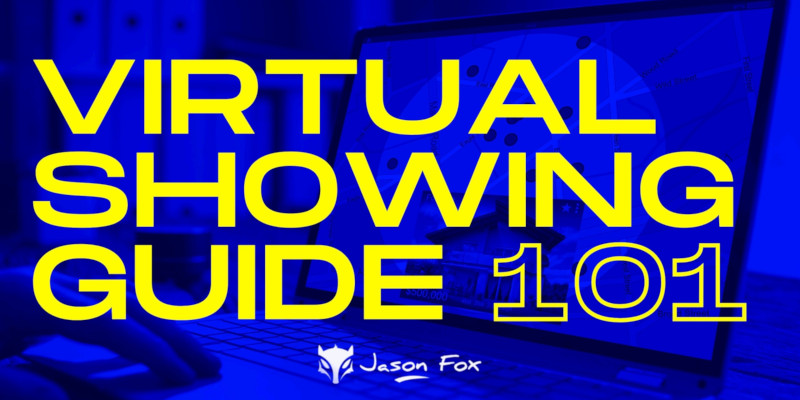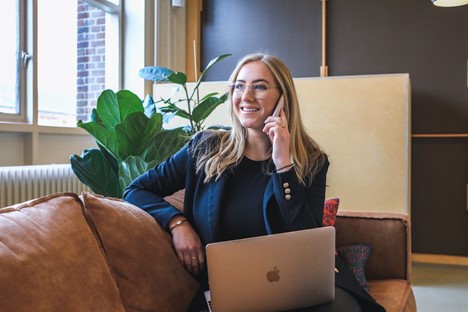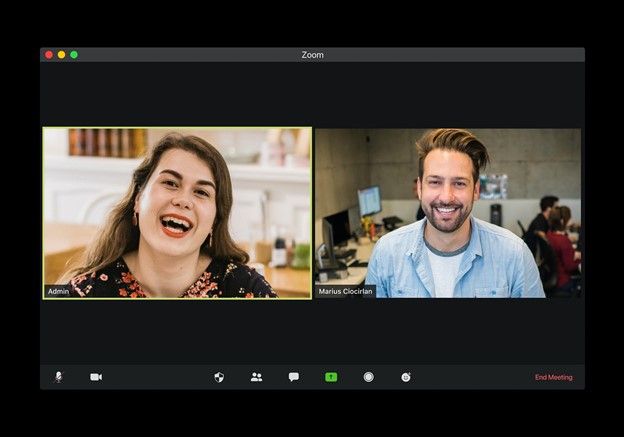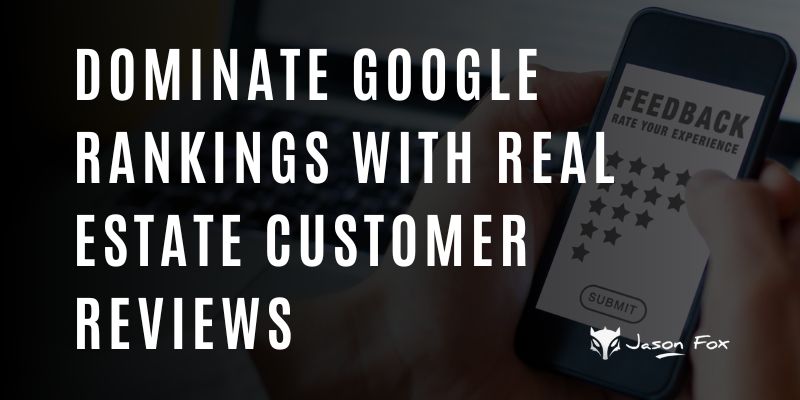Virtual Showing Guide 101
In the blink of an eye, Covid-19 transformed the idea of virtual open homes from being a high tech, cool yet optional property marketing technique, to becoming fast considered an essential tool.
Every property agent knows that the key to selling a property is often in the hosting of a successful open house. Traditionally, these have been a face-to-face event held at the property. While it can be argued that you can’t beat experiencing a property in the flesh, these viewings have always been subject to challenges when it comes to the busy combined schedules of agents, homeowners and prospective buyers.
In today’s virtual world, however, the scope for flexibility is endless. By employing the technique of virtual showings, pandemic conditions aside, agents can cater to buyers who may not be able to attend the property in person, such as when relocating. Looking ahead, hosting virtual showings is fast becoming an essential component to real estate agents generating leads and selling homes.
So, if you are ready to make the switch to virtual home viewings, here are some top tips for successfully hosting a virtual property showing.
Photo by Magnet.me on Unsplash
Deciding whether to go live
Before anything else, you need to decide whether you will offer your viewings live or pre-recorded, so let’s look at the pros and cons of each:
Live and interactive virtual showings
Hosted on social media sites like Facebook or Instagram, or through online conferencing platforms such as Google Hangouts or Zoom, these interactive tours are hosted live by the realtor.
- Pros: Live streaming your property showing allows for real-time interactive engagement with prospective buyers. This gives the agent an opportunity to build rapport and answer any queries or concerns that may arise. It is the closest alternative to the traditional in-person approach.
- Cons: Any agent that lacks confidence or on-camera experience may struggle with the pressure of going live – stress and overwhelm that could ultimately lead to losing the confidence of potential buyers.
Pre-recorded virtual showings
For convenience and ease of preparation, these showings can be filmed ahead of time and allow for strategically-timed uploading to platforms such as YouTube and Facebook, or alternatively on landing pages like Command.
- Pros: Pre-recording a showing certainly allows for maximum control over the final piece. It allows for plenty of editing to highlight the most desirable amenities and property features, as well as adding impressive effects such as fade-ins, titles and transitions between shots. It also helps any agents lacking in confidence to practice and perfect their showing without the pressures of going live.
- Cons: These static video tours don’t allow for any real-time interactions with prospective buyers. While secondary interaction through commentary is something, it doesn’t beat being able to build real-time rapport and answers questions on the spot as the viewing progresses.
Promoting your virtual showing
Regardless of whether you choose to pre-record or go live, once you have decided on the platform you will be hosting it through, advertise it as if you were going to be holding it in person.
Let your clients know well in advance what time and date the virtual event will be taking place and how they can connect to it with ease.
Spread the word across multiple channels, not just via social media but through your real estate website, email marketing and other professional platforms, too. You can also consider investing in a lead generation product to effectively increase your potential audience.
Preparation is everything
Practice makes perfect, and this couldn’t be truer when it comes to preparing for a virtual home showing, particularly a live one, of course. Working through several dry runs is important for avoiding any unnecessary mistakes when it comes to the actual event.
Do a practice walk-through
Familiarize yourself with the property layout prior to streaming or recording. Make your tour hosting as seamless as possible by considering in advance what key features you mustn’t overlook, as well as any obstacles you need to avoid.
Plan your talking points
Practice what you plan to say before hitting record or streaming live by running through your talking points in advance. It is also a good idea to have a list of talking prompts to hand for live streaming.
While it may seem unprofessional to use notes, remember that it is not a test of memorization and, in fact, preparedness is preferable over forgetting to mention key points.
Test your tech in advance
If you are planning to go live, stream to your chosen platform in advance of the main event, and get someone else to watch it, too. This way, you can be sure that you have not only tested the technology itself, but that you get all necessary feedback such as lighting or sound issues, to perfect the presentation. The last thing you want is to be wasting precious time and coming across unprofessional and ill-prepared during a live feed as you try to tackle technical issues.
Tips for going live
- Arrive nice and early for set up
- Turn on all property lights and make sure all doors are open
- Start your showing on the street to show viewers the outside of the property first
- Introduce yourself, thank your audience for joining you and make them feel very welcome to interact with you and ask any questions as you go
Enjoy yourself!
Chat with everyone as you would if you were in-person – keep it light and natural and try to avoid sounding too scripted. As any good salesperson knows, many times, it’s the feeling that the person creates that someone is buying as much as the product or service. While a property must surely be to a potential buyer’s personal liking, the extent to which they feel comfortable and trusting of you, as the agent, will go a long way towards them considering the property you are presenting.
So, exude a healthy amount of confidence and enjoyment when presenting your virtual viewing, without going overboard and having it come across as forced.
It is important to recognize that the virtual world does often require a little extra energy to overcome the lack of in-person contact that usually assists with rapport building. Many non-verbal communication cues can be missed, and whether or not you feel uncomfortable with the online environment, some of your viewers might.
Some people are simply naturally shy and need a little more encouragement to join in the discussion. Don’t push these people too far out of their comfort zone, but acknowledge them, ask them questions and include them in a friendly way.
Also, take your time answering their questions to allow for any minor tech delays, while maintaining confidence and assure them that you will follow up on any question you don’t immediately know the answer to.
Extra tips regarding tech
- Ideally, hold the camera horizontally to provide a wider angle for viewers to see more of the home and get a better sense of the space
- If you can, consider recruiting a colleague or even a friend to film it for you. This will leave you free to move about more freely as you navigate the property and concentrate on including all key points.
- You could also organize for other team members to connect with the live stream and pose as potential buyers. While this may seem disingenuous, it isn’t only as a tool to assist with your presentation, but can also help any legitimate clients who feel less forthcoming to engage with the discussions.
Not sure about going live?
If the idea of doing a live streamed viewing leaves you quaking in your boots, don’t worry – there are plenty of advantages to static virtual tours. Far over and above a standard, pre-recorded walk through, you can utilize online software such as Asteroom to create stunning virtual 3D tours.
These tours use image enhancement technology as well as options for creating a 3D dollhouse, a 2D floor plan and more. Virtual 3D tours allow buyers to experience properties at their own pace, as well as establishing a 24/7 permanent open house for maximum property exposure.
Virtual 3D tours are also extremely versatile. They may seem like a considerable amount of work or investment to create but you can incorporate them into a wide range of marketing materials, such as open-house notification and emails.
It’s also worth noting that these tours are not limited to existing real estate – they can also provide an innovative solution to agents when representing a property that is not yet ready for viewing, such as new or renovated buildings. A virtual 3D tour allows you to present a finished and even furnished interior to prospective buyers before it actually is, making it considerably easier for them to imagine themselves living in it.
It can be daunting to host a virtual viewing with little or no experience, but with sufficient planning and professional presentation, you can create an enjoyable and informative experience for your clients that has every chance of converting into a sale.
post contents
In the blink of an eye, Covid-19 transformed the idea of virtual open homes from being a high tech, cool yet optional property marketing technique, to becoming fast considered an essential tool.
Every property agent knows that the key to selling a property is often in the hosting of a successful open house. Traditionally, these have been a face-to-face event held at the property. While it can be argued that you can’t beat experiencing a property in the flesh, these viewings have always been subject to challenges when it comes to the busy combined schedules of agents, homeowners and prospective buyers.
In today’s virtual world, however, the scope for flexibility is endless. By employing the technique of virtual showings, pandemic conditions aside, agents can cater to buyers who may not be able to attend the property in person, such as when relocating. Looking ahead, hosting virtual showings is fast becoming an essential component to real estate agents generating leads and selling homes.
So, if you are ready to make the switch to virtual home viewings, here are some top tips for successfully hosting a virtual property showing.
Photo by Magnet.me on Unsplash
Deciding whether to go live
Before anything else, you need to decide whether you will offer your viewings live or pre-recorded, so let’s look at the pros and cons of each:
Live and interactive virtual showings
Hosted on social media sites like Facebook or Instagram, or through online conferencing platforms such as Google Hangouts or Zoom, these interactive tours are hosted live by the realtor.
- Pros: Live streaming your property showing allows for real-time interactive engagement with prospective buyers. This gives the agent an opportunity to build rapport and answer any queries or concerns that may arise. It is the closest alternative to the traditional in-person approach.
- Cons: Any agent that lacks confidence or on-camera experience may struggle with the pressure of going live – stress and overwhelm that could ultimately lead to losing the confidence of potential buyers.
Pre-recorded virtual showings
For convenience and ease of preparation, these showings can be filmed ahead of time and allow for strategically-timed uploading to platforms such as YouTube and Facebook, or alternatively on landing pages like Command.
- Pros: Pre-recording a showing certainly allows for maximum control over the final piece. It allows for plenty of editing to highlight the most desirable amenities and property features, as well as adding impressive effects such as fade-ins, titles and transitions between shots. It also helps any agents lacking in confidence to practice and perfect their showing without the pressures of going live.
- Cons: These static video tours don’t allow for any real-time interactions with prospective buyers. While secondary interaction through commentary is something, it doesn’t beat being able to build real-time rapport and answers questions on the spot as the viewing progresses.
Promoting your virtual showing
Regardless of whether you choose to pre-record or go live, once you have decided on the platform you will be hosting it through, advertise it as if you were going to be holding it in person.
Let your clients know well in advance what time and date the virtual event will be taking place and how they can connect to it with ease.
Spread the word across multiple channels, not just via social media but through your real estate website, email marketing and other professional platforms, too. You can also consider investing in a lead generation product to effectively increase your potential audience.
Preparation is everything
Practice makes perfect, and this couldn’t be truer when it comes to preparing for a virtual home showing, particularly a live one, of course. Working through several dry runs is important for avoiding any unnecessary mistakes when it comes to the actual event.
Do a practice walk-through
Familiarize yourself with the property layout prior to streaming or recording. Make your tour hosting as seamless as possible by considering in advance what key features you mustn’t overlook, as well as any obstacles you need to avoid.
Plan your talking points
Practice what you plan to say before hitting record or streaming live by running through your talking points in advance. It is also a good idea to have a list of talking prompts to hand for live streaming.
While it may seem unprofessional to use notes, remember that it is not a test of memorization and, in fact, preparedness is preferable over forgetting to mention key points.
Test your tech in advance
If you are planning to go live, stream to your chosen platform in advance of the main event, and get someone else to watch it, too. This way, you can be sure that you have not only tested the technology itself, but that you get all necessary feedback such as lighting or sound issues, to perfect the presentation. The last thing you want is to be wasting precious time and coming across unprofessional and ill-prepared during a live feed as you try to tackle technical issues.
Tips for going live
- Arrive nice and early for set up
- Turn on all property lights and make sure all doors are open
- Start your showing on the street to show viewers the outside of the property first
- Introduce yourself, thank your audience for joining you and make them feel very welcome to interact with you and ask any questions as you go
Enjoy yourself!
Chat with everyone as you would if you were in-person – keep it light and natural and try to avoid sounding too scripted. As any good salesperson knows, many times, it’s the feeling that the person creates that someone is buying as much as the product or service. While a property must surely be to a potential buyer’s personal liking, the extent to which they feel comfortable and trusting of you, as the agent, will go a long way towards them considering the property you are presenting.
So, exude a healthy amount of confidence and enjoyment when presenting your virtual viewing, without going overboard and having it come across as forced.
It is important to recognize that the virtual world does often require a little extra energy to overcome the lack of in-person contact that usually assists with rapport building. Many non-verbal communication cues can be missed, and whether or not you feel uncomfortable with the online environment, some of your viewers might.
Some people are simply naturally shy and need a little more encouragement to join in the discussion. Don’t push these people too far out of their comfort zone, but acknowledge them, ask them questions and include them in a friendly way.
Also, take your time answering their questions to allow for any minor tech delays, while maintaining confidence and assure them that you will follow up on any question you don’t immediately know the answer to.
Extra tips regarding tech
- Ideally, hold the camera horizontally to provide a wider angle for viewers to see more of the home and get a better sense of the space
- If you can, consider recruiting a colleague or even a friend to film it for you. This will leave you free to move about more freely as you navigate the property and concentrate on including all key points.
- You could also organize for other team members to connect with the live stream and pose as potential buyers. While this may seem disingenuous, it isn’t only as a tool to assist with your presentation, but can also help any legitimate clients who feel less forthcoming to engage with the discussions.
Not sure about going live?
If the idea of doing a live streamed viewing leaves you quaking in your boots, don’t worry – there are plenty of advantages to static virtual tours. Far over and above a standard, pre-recorded walk through, you can utilize online software such as Asteroom to create stunning virtual 3D tours.
These tours use image enhancement technology as well as options for creating a 3D dollhouse, a 2D floor plan and more. Virtual 3D tours allow buyers to experience properties at their own pace, as well as establishing a 24/7 permanent open house for maximum property exposure.
Virtual 3D tours are also extremely versatile. They may seem like a considerable amount of work or investment to create but you can incorporate them into a wide range of marketing materials, such as open-house notification and emails.
It’s also worth noting that these tours are not limited to existing real estate – they can also provide an innovative solution to agents when representing a property that is not yet ready for viewing, such as new or renovated buildings. A virtual 3D tour allows you to present a finished and even furnished interior to prospective buyers before it actually is, making it considerably easier for them to imagine themselves living in it.
It can be daunting to host a virtual viewing with little or no experience, but with sufficient planning and professional presentation, you can create an enjoyable and informative experience for your clients that has every chance of converting into a sale.
Latest articles
First-time homebuyers are probably eager to find their forever home in the housing market. However, there’s plenty of mystery behind the buying landscape, how to purchase and other considerations they should make.
Unlock the potential of content marketing in real estate with actionable strategies designed to boost your online presence and engage clients effectively.
The Importance of Google Rankings for Real Estate Agents Over the past fifteen years, I’ve seen how a good Google ranking can make or break a real estate business. Higher rankings mean more people seeing
BECOME A MEMBER
Become A Free DIY Real Estate Marketing Member & Get Access To:
LARGEST COLLECTION OF
Real Estate Marketing e-Books, Guides, Templates, & whitepapers
ON THE INTERNET
+ OVER 70 How To Website Training Videos including; WordPress, Agent Evolution Themes, & IDX Broker
+ DIY Real Estate Marketing Tips and Strategies Delivered to Your Inbox
Share this article
recent posts
Written by : jasonfox
Jason Fox - Real Estate Marketing
Business: We build WordPress Real Estate Websites with IDX
Me: #GoHawks, #BringBackTheSonics, #MaybeNextYearMariners, #ILoveMyKids #SeattleSunLover #SeattleWaterLover #BFF
Blog: Focuses on Wordpress Websites, Content Management, SEO Services, SEM Campaigns, Social Media Marketing, Email Marketing, Beautiful Design, IDX, and more.







